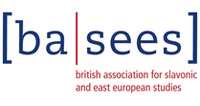

|
Sat6 Apr02:00pm(15 mins)
|
Where:
Teaching Room A
Presenter:
|
The paper will focus on analysing the industrial policies of Minsk and Tallinn under Soviet rule. The research will explore the differences in the level of independence of both Soviet republics from the decisions made by the Moscow Centre – on one hand, and the ability to influence these decisions – on the other.
BSRR, as one of three founding republics of the USSR (together with RSFSR and USRR), which remained unchanged after 1936, formally had a say in the preparation of the all-republic economic plans. At the same time, ESRR was frequently treated by the communist leaders as a testing ground for ideas of economic liberalisation, and – consequently – enjoyed relative independence in that sphere. This – therefore – would suggest that while Minsk had more leverage over Moscow during the process of strategic planning, Tallinn enjoyed greater freedom in the execution of approved plans.
The research presented in the paper will aim to confirm or deny these intuitions. I will explore the structure of the management of industry in the two Soviet republics and their relationship with the USSR authorities. Apart from the general overview of the formal and informal institutions regulating relationships in the Soviet industry, I would also look at the oil sector in both BSRR and ESSR. The development of this sector in the two republics is tied to the process of Soviet industrialisation.
The period chosen for the analysis begins with the completion of the collectivisation in agriculture and the first wave of industrialisation that changed the economic structures of the analysed regions. It ends with the first year of Perestroika, a process of deep changes within the Soviet system, that eventually led to its dissolution.
The paper is part of a broader study on the formation of property rights in Belarus and Estonia in the two countries. It aims at explaining how deeply rooted are certain economic concepts and how they influenced the period of transition.